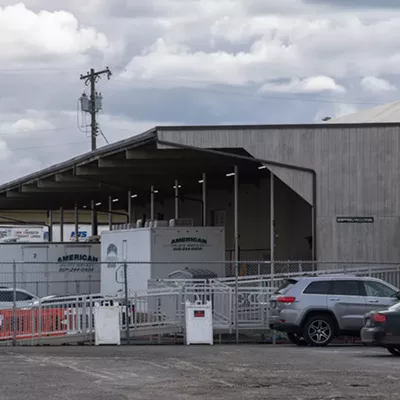But the introspective Lewis found little in his life to be proud of on Aug. 18, 1805. That evening he wrote in his journal, "This day I completed my thirty first year, and conceived that I had in all human probability now existed about half the period which I am to remain in this Sublunary world. I reflected that I had as yet done little, very little indeed, to further the hapiness of the human race, or to advance the information of the succeeding generation."
Lewis incorrectly minimized his personal achievements. Take his most recent days, for example. On Aug. 12, 455 days after the Corps of Discovery departed from their winter camp in Illinois, Lewis and his companions became the first citizens of the United States to pass over the Continental Divide when they followed an Indian trail across Lemhi Pass (at 7,323 feet of elevation) that sits between present-day Montana and Idaho.
The following afternoon, Lewis courageously introduced himself to "a party of about 60 warriors mounted on excellent horses who came in nearly full speed," and other Shoshone villagers who lived alongside the Lemhi River. Later, Lewis parleyed with the tribal chief by using "the common language of jesticulation or signs which seems to be universally understood by all the Nations." Dinner that evening included salmon, eliciting from Lewis the comment that "this was the first salmon I had seen and perfectly convinced me that we were on the waters of the Pacific Ocean."
Ultimately Lewis persuaded some Shoshone to return with him to the eastern side of Lemhi Pass, where they met up with William Clark and the main body of the Corps, who were several days behind Lewis. Together Lewis and Clark organized a great council at which the explorers promised the Shoshone headmen future deliveries of firearms while the Indian chiefs, in turn, agreed to furnish the visitors with horses for the transport of Corps' equipment. The achievements of Lewis had been, in truth, monumental, not of "very little" consequence. He truly merited a happy birthday, whether he believed so or not.
For six days following his birthday, Lewis remained on the east side of Lemhi Pass with a contingent of Shoshone tribesmen and some of his own men. His major task was secretly to bury, or cache, the expedition canoes and extraneous supplies. When he ascended Lemhi Pass for the first time, Lewis saw an unsettling vista of mountains stretching west to the horizon: "I discovered immence ranges of high mountains still to the West of us with their tops partially covered with snow."
He half-expected to see the Pacific Ocean in the distance, but such was not the case. Mountains required horses, not canoes, and the premium placed upon baggage space mandated that some items of the Corps be left behind, hopefully to be picked up on the return journey. To that end, Lewis laid up the expedition canoes in a pond by sinking them with stones, "hoping by this means to guard against both the effects of high water, and that of the fire," which the condition of the landscape suggested to him must be frequent in this vicinity. Overnight temperatures on Aug. 21-22 dipped to 19 degrees and 22 degrees respectively, complicating the operation by forming "ice 1/4 of an inch thick on the water which stood in the vessels."
At times, Lewis occupied himself in camp by observing the social values, physical appearance and habits of the Shoshone people. If Lewis still doubted his ability "to advance the information of the succeeding generation," his extensive and systematic reporting in this area has put that idea to rest for modern scientists. Ethnographers consider Lewis's observations of the Shoshone among the most complete cultural records written during the entire 19th century. He reviewed the tribe's clothing, weapons, hunting techniques, recipes, treatment of women and the elderly, games and gambling.
Meantime, Clark and 13 members of the expedition, including Sacagawea, the Shoshone Indian woman who, with her husband and baby, had joined the expedition during the winter in present-day North Dakota, proceeded over Lemhi Pass for the first time, leaving Lewis to hide the canoes and catch up.
Once across the divide, Clark conferred with the Shoshone leaders about Western geography. Almost immediately, he decided to field-test one possible route, the one which the Indians said would connect to other rivers and ultimately would lead to the "great water" or Pacific Ocean. With only an Indian to guide him, Clark set out on Aug. 20 to appraise the situation personally. After naming the river for his friend Lewis, Clark traveled along side it for 52 miles. In the end, he noted that the hillsides were "like the Side of a tree Streight up" and he agreed with Sergeant Patrick Gass that "The water is so rapid and the bed of the river so rocky, that going by water appeared impracticable; and the mountains so amazingly high, steep and rocky, that it seemed impossible to go along the river by land."
Today that watercourse across Idaho, distinguished by foaming rapids and deep canyons, is the Salmon River.
Next week: With horses and a guide, the Corps of Discovery sets out for the Pacific Ocean.















